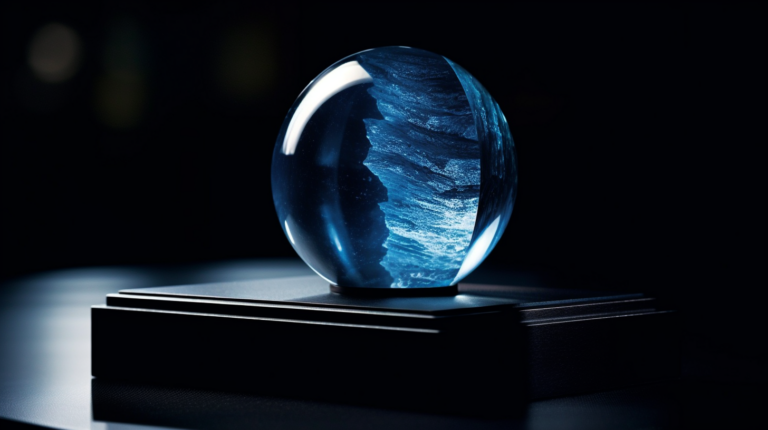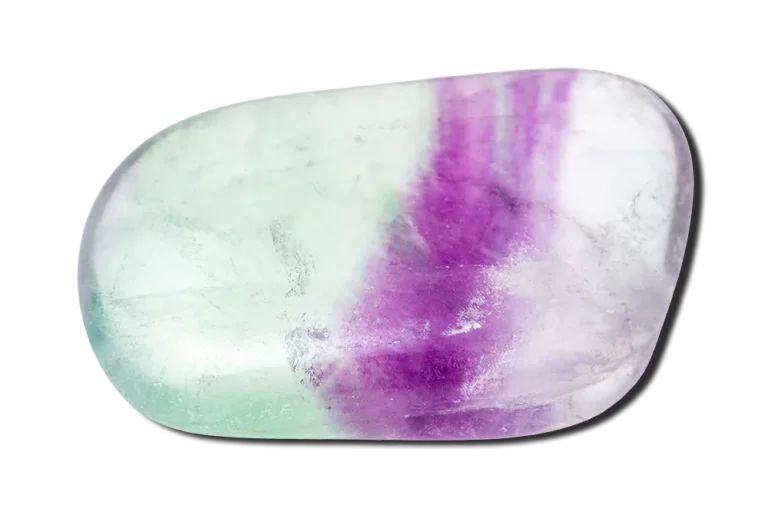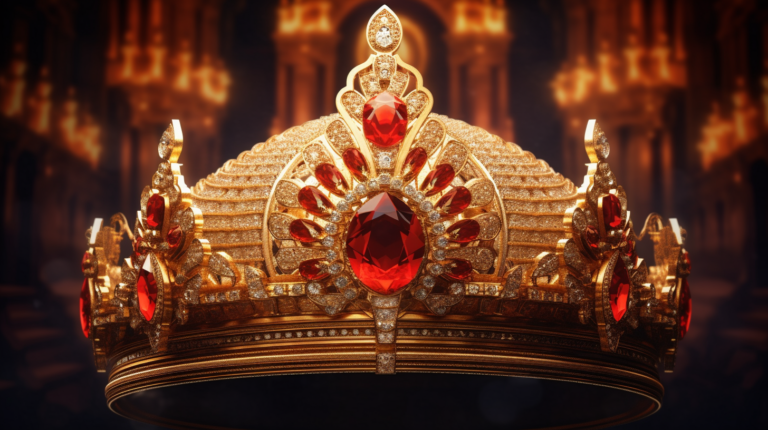Egyptian Jasper: Properties, Benefits & Meanings
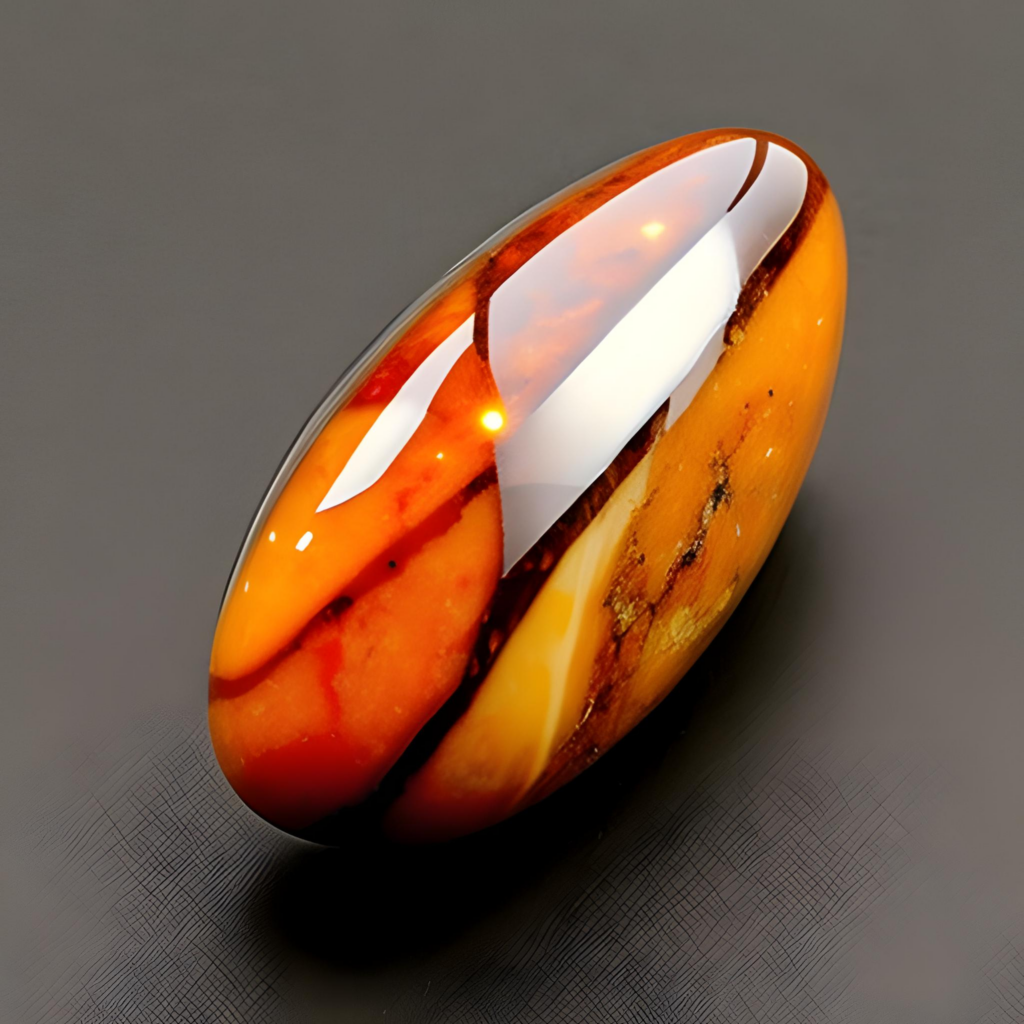
Egyptian Jasper Overview
Egyptian Jasper, also known as Egyptian Stone or Egyptian Marble, is an ornamental gemstone with a long history and cultural significance. It is not a true jasper but a form of veined limestone or dolomite with distinctive banding or swirling patterns. The stone has various colors, including creamy white, beige, brown, red, yellow, and gray. Its patterns can resemble landscapes, waves, or other organic shapes, making each piece unique.
It is a captivating gemstone with a rich history, prized for its aesthetic beauty and symbolic significance. Its use in Ancient Egypt and its continued popularity today showcase its timeless appeal and enduring charm. In this article, we will cover all the essential information about Egyptian Jasper. This includes its properties, benefits, and meanings.
What Is Egyptian Jasper?
Egyptian Jasper, also known as Egyptian Stone or Egyptian Marble, is a unique gemstone that is not a true jasper but a type of veined limestone or dolomite. It is named after its historical association with Egypt, where it has been highly regarded for centuries.
Egyptian Jasper is characterized by its distinctive banding or swirling patterns in various colors. The base color of the stone can range from creamy white to beige, providing a neutral backdrop for the intricate patterns that adorn its surface. In addition, the patterns can include shades of brown, red, yellow, and gray, forming beautiful and captivating designs resembling landscapes, waves, or other organic shapes.
The stone has a rich historical significance and cultural symbolism amongst the Egyptians and others. In ancient Egypt, Egyptian Jasper was highly valued and used in various art forms, including sculptures, amulets, and jewelry. It was associated with power, protection, and spirituality, believed to bring balance, harmony, and grounding to those who possessed it. Pharaohs such as Queen Nefertiti, nobles, and priests adorned themselves with jewelry and talismans from Egyptian Jasper.
How is Egyptian Jasper Formed?
The gem is formed through a geological process over millions of years. As a result, it is not a true jasper but a type of veined limestone or dolomite exhibiting unique patterns and colors.
Egyptian Jasper’s formation begins with sediment deposition in ancient marine environments. These sediments consist of the remains of marine organisms, such as shells, coral, and other organic matter, as well as inorganic minerals. Over time, these sediments accumulate and undergo compaction under the weight of subsequent layers.
As the sedimentary layers build up, they are subjected to heat and pressure from the Earth’s crust. This process, known as lithification, transforms the loose sediment into solid rock. The heat and pressure cause the minerals within the rock to recrystallize and form interlocking grains, giving the rock its cohesive structure.
During this recrystallization process, the minerals present in the original sediments can undergo chemical changes and reactions. In the case of Egyptian Jasper, the limestone or dolomite undergoes metamorphism, resulting in the formation of new minerals and the creation of characteristic banding and swirling patterns.
The patterns and colors in Egyptian Jasper result from mineral impurities and variations in the rock’s chemical composition. Different minerals, such as iron oxides and hydroxides, manganese oxides, and other trace elements, can give rise to various hues and create the unique patterns seen in Egyptian Jasper. These minerals may be introduced during the original sedimentation process or through later hydrothermal activity, which involves the movement of heated fluids through the rock, carrying additional minerals with them.
Physical Properties of Egyptian Jasper
| Mineral Group | Chalcedony |
| Formula | SiO2 |
| Chemical Name: | Silicon Dioxide |
| Color | Creamy White to Beige |
| Hardness (Mohs scale) | 6.5-7 |
| Refractive Index | 1.53-1.54 |
| Fracture | Conchoidal |
| Luster | Vitreous |
| Specific Gravity | 2.50-2.90 |
| Transparency | Opaque |
Etymology of Egyptian Jasper
The term “Egyptian Jasper” is a common name given to this particular gemstone and does not have a direct etymological origin. Instead, it is a descriptive term that combines the name of the country, Egypt, with the word “jasper,” which refers to a gemstone known for its opaque and often patterned appearance.
The name “Egyptian” in Egyptian Jasper is derived from Egypt, a country in northeastern Africa with a rich historical and cultural heritage. Egypt has been renowned for its significant contributions to ancient civilizations, including its intricate art, architecture, and use of various gemstones.
Where is Egyptian Jasper Found?
Here is the list of countries where Egyptian Jasper is found:
- Egypt (from where it derives its name)
- Germany
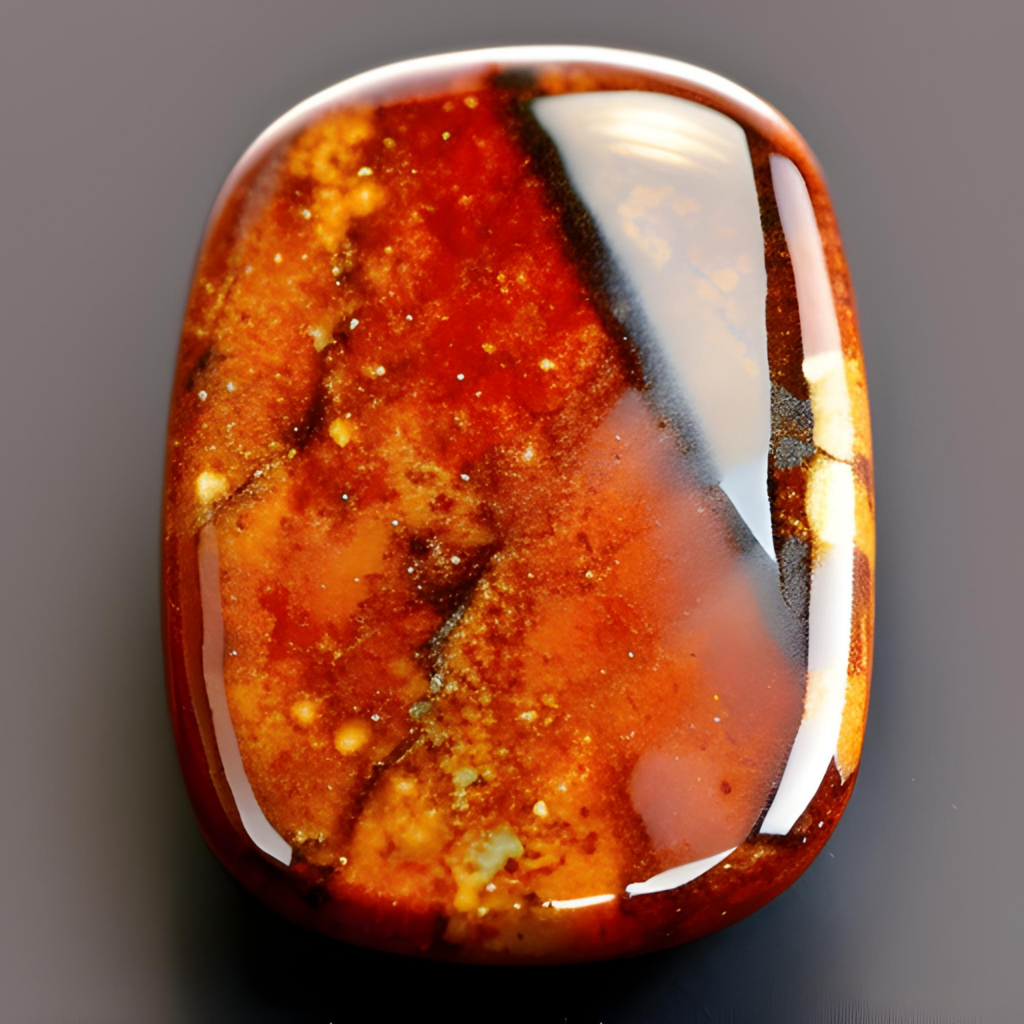
Egyptian Jasper Appearance
Egyptian Jasper, known as Egyptian Stone or Egyptian Marble, exhibits a distinctive and captivating appearance. While it is not a true jasper, it shares certain characteristics with this gemstone. Here is a description of the appearance of Egyptian Jasper:
Color: Egyptian Jasper showcases a range of colors that contribute to its unique beauty. The base color of the stone can vary from creamy white to beige. It is the backdrop for the intricate patterns and veining that adorn the surface. The patterns typically comprise shades of brown, red, yellow, and gray, creating a striking contrast against the lighter background.
Patterns: The patterns found in Egyptian Jasper are one of its most remarkable features. They often resemble landscapes, waves, or other organic shapes. The patterns can be swirling, veined, or banded, creating an intricate and visually captivating effect. Each piece of Egyptian Jasper is unique due to the patterns and color distribution variations.
Translucency and Texture: Egyptian Jasper is typically opaque, lacking translucency. Its smooth and polished texture enhances the stone’s visual appeal. It makes it suitable for use in jewelry and decorative objects.
Size and Shape: Egyptian Jasper is available in various sizes and shapes. It can be found in rough stones, slabs, cabochons, beads, pendants, and other gemstone cuts. The size and shape depend on the intended use, ranging from small accent stones to larger focal pieces.
Variations: Egyptian Jasper displays various colors, patterns, and intensity variations. Some specimens may feature more vibrant colors, while others exhibit subtle, earthy tones. In addition, the patterns can vary from bold and prominent to delicate and intricate. These variations contribute to the uniqueness and individuality of each piece of Egyptian Jasper.
Types of Egyptian Jasper
Egyptian Jasper has several types or variations, each with unique characteristics and appearance. These types may differ in terms of color, pattern, or the presence of specific mineral inclusions. Here are some special types of Egyptian Jasper:
Brown Jasper: This type of Egyptian Jasper is characterized by its predominant brown hues. It often displays intricate brown, tan, and cream patterns, creating a warm and earthy appearance.
Red Jasper: Egyptian Red Jasper features vibrant shades of red, ranging from deep crimson to brick red. It may exhibit swirling patterns of red, black, and brown, adding to its visual allure.
Yellow Jasper: Yellow Jasper from Egypt is known for its sunny and golden hues. It showcases patterns and bands in shades of yellow, cream, and beige, often with intricate veining.
Picture Jasper: Picture Jasper refers to a type of Jasper that displays picturesque scenes or images within its patterns. Egyptian Picture Jasper can exhibit patterns resembling landscapes, seascapes, or abstract designs, creating a unique and visually interesting appearance.
Brecciated Jasper: Brecciated Jasper is characterized by fragmented or angular patterns resulting from the geological process of brecciation. Egyptian Brecciated Jasper showcases these fragmented patterns in various colors, often including reddish-brown and beige.
Orbicular Jasper: Orbicular Jasper features distinct circular or orb-like patterns on its surface. Egyptian Orbicular Jasper may display these rounded patterns in various colors, creating a captivating and eye-catching effect.
Ocean Jasper: Ocean Jasper is characterized by its colorful and intricate patterns, often resembling underwater scenes or oceanic landscapes. While not exclusive to Egypt, Ocean Jasper sourced from Egyptian deposits can exhibit unique patterns and colors.
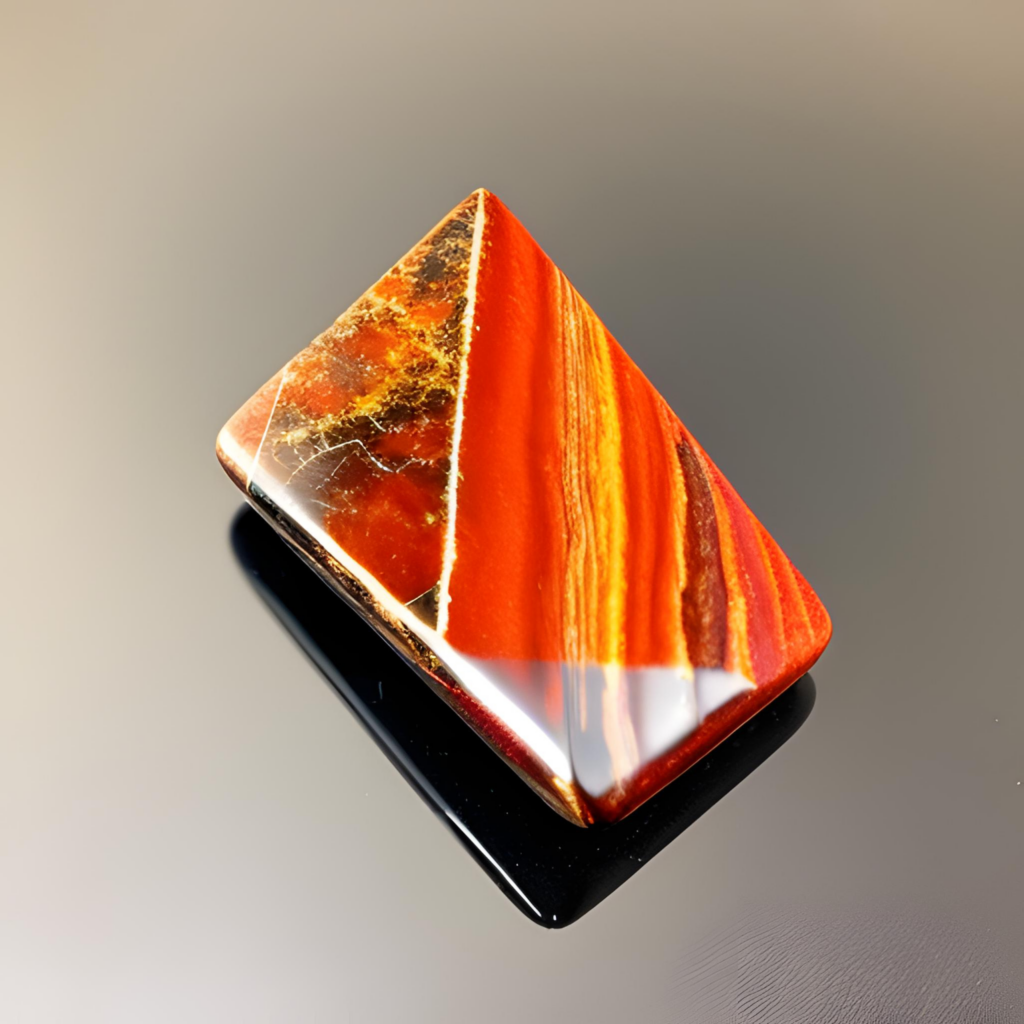
Egyptian Jasper Value and Price
The value and price of Egyptian Jasper gemstones can vary depending on several factors, including carat weight, cut, clarity, and color. However, it’s important to note that Egyptian Jasper is less widely recognized or sought after than some other gemstones so pricing may be less standardized or consistent than more popular gemstones. The following factors can influence the value and price of Egyptian Jasper:
Carat Weight: Like many gemstones, the price of Egyptian Jasper can increase with larger carat weights. Larger stones are generally rarer and more desirable, commanding higher prices.
Cut: The cut of an Egyptian Jasper gemstone refers to its shape and faceting style. Well-cut gemstones with precise proportions and symmetry can enhance the stone’s beauty and value. However, different cuts, such as cabochons, beads, or faceted stones, can affect the price based on the craftsmanship.
Clarity: It is typically an opaque gemstone, so clarity is not a major consideration as it would be for transparent gemstones. However, any visible inclusions or flaws may impact the overall appearance and value.
Color: Color is an important factor in determining the value of Egyptian Jasper. Gemstones with vibrant and distinct colors, such as deep reds, rich browns, or vibrant yellows, are generally more valuable. In addition, unusual or highly desirable color patterns, like intricate veining or striking banding, can add to the gemstone’s value.
It’s important to note that there is no standardized pricing system specifically for the gem. The value and price of the gemstones can be influenced by market demand, availability, and the individual characteristics of the stone. Prices vary significantly depending on the specimen’s source, quality, and overall desirability.
How Can You Tell if Egyptian Jasper Is Real?
To determine if an Egyptian Jasper gemstone is real or fake, there are several methods and considerations you can employ:
Visual Inspection: Examine the gemstone closely to look for signs of synthetic materials or imitations. Real Egyptian Jasper should exhibit natural patterns, colors, and banding. If the patterns appear too uniform, symmetrical, or artificial, it may indicate a fake.
Authenticity Certificates: Ask for or verify the presence of an authenticity certificate from a reputable gemological laboratory or expert. A genuine Egyptian Jasper gemstone should have proper documentation confirming its authenticity.
Weight and Density: Egyptian Jasper has a specific weight and density range. While this method requires precise measurements and may not be practical for casual assessments, comparing the weight and density of a suspected gemstone to known genuine specimens can help identify any significant deviations.
Mohs Hardness Test: Egyptian Jasper has a hardness of around 4 to 5 on the Mohs scale. You can use a Mohs hardness test kit to assess the gemstone’s resistance to scratching. If the gemstone scratches easily or shows signs of abrasion, it may not be genuine Egyptian Jasper.
UV Fluorescence: Some gemstones exhibit characteristic fluorescence under ultraviolet (UV) light. Egyptian Jasper may exhibit a weak to moderate fluorescence reaction, emitting a dull glow under UV light. This test is not definitive but can be used as additional information.
Seek Expert Opinion: When in doubt, consult a qualified gemologist or expert specializing in gemstone identification. They have the expertise and tools necessary to examine the gemstone thoroughly and provide a definitive assessment of its authenticity.
What Does Egyptian Jasper Symbolize?
Egyptian Jasper, also known as Pharaoh Stone or King’s Jasper, is believed to symbolize power, protection, and stability. It is a type of chalcedony, a mineral that often forms in volcanic rocks, and has been highly valued by ancient Egyptians as a talisman for its ability to ward off evil spirits and promote courage and endurance. The stone’s rich earthy colors, ranging from deep red to brown and yellow, are also associated with grounding and stability, making it a popular choice for those seeking balance and stability in their lives. Today, Egyptian Jasper is still revered as a powerful healing stone that can help to strengthen one’s connection to the earth and promote a sense of inner peace and security.

Uses of Egyptian Jasper
Here are some common uses of the gemstone:
Jewelry: It is frequently used in jewelry design. It is crafted into various forms, including beads, pendants, cabochons, and carved gemstones. The gemstone’s patterns and colors make it an ideal choice for creating eye-catching jewelry such as necklaces, bracelets, earrings, and rings.
Decorative Objects: Its captivating appearance makes it a popular choice for decorative objects. It creates ornamental items, such as figurines, vases, bookends, and decorative bowls. In addition, it’s unique patterns and colors add a touch of natural beauty to interior spaces.
Meditation and Energy Work: It is often utilized in meditation and energy healing practices. It is believed to have a grounding and calming effect that helps center the mind and enhance spiritual awareness. The stone can be held, placed on the body, or used in grids during meditation or energy healing sessions.
Feng Shui and Home Decor: In Feng Shui, the gem is considered a stone of stability and grounding. It is believed to help create harmonious and balanced energy within a space. It can also be placed strategically in different areas of a home or office to enhance energy flow and promote a sense of tranquility.
Crystal Healing and Well-being: Egyptian Jasper is associated with various healing properties and is used in crystal healing practices. It is believed to support physical, emotional, and spiritual well-being. Egyptian Jasper can be placed on specific energy points or used during energy healing sessions to promote balance, vitality, and inner harmony.
Personal Empowerment and Intentions: Egyptian Jasper is often utilized as a personal empowerment stone. It is believed to boost self-confidence, courage, and motivation. Individuals may wear Egyptian Jasper to enhance their power, manifest goals, or promote positive transformation.
Is Egyptian Jasper a birthstone?
It is not recognized as a traditional birthstone in any birthstone system. Birthstones are typically assigned to specific months of the year and vary across cultural and gemological traditions. The most commonly recognized birthstone systems, such as the modern and traditional birthstone charts, do not include the gem as a designated birthstone for any month.

Egyptian Jasper Jewelry
How To Take Care Of Egyptian Jasper Jewelry?
To ensure the longevity and beauty of your jewelry, it’s important to provide proper care and maintenance. Here are some tips to help you take care of your Egyptian Jasper jewelry:
Avoid Harsh Chemicals: It is relatively durable but susceptible to harsh chemicals’ damage. Avoid exposing your jewelry to harsh cleaning agents, bleach, perfume, hairspray, and cosmetics. These chemicals can cause discoloration and dullness or even damage the gemstone.
Store Properly: When not wearing the jewelry, store it in a clean, dry, and preferably padded or lined jewelry box or pouch. This will help protect it from scratches, dust, and potential damage from other jewelry pieces.
Handle with Care: Although the gem is reasonably durable, it can still be susceptible to chips and cracks if subjected to rough handling or impacts. Therefore, handle your jewelry carefully, avoiding sudden impacts, and remove it before engaging in activities that could damage the gemstone.
Cleaning: Regular cleaning will help maintain the beauty of your jewelry. However, it’s important to use gentle methods to avoid any potential damage.
For example, you can clean your jewelry by rinsing it in lukewarm water and gently scrubbing it with a soft toothbrush or a jewelry cleaning brush. Avoid using harsh brushes or abrasive cleaners that could scratch or damage the gemstone. After cleaning, pat dry with a soft, lint-free cloth.
Avoid Extreme Temperatures: It can be sensitive to extreme temperatures. Avoid exposing your jewelry to rapid temperature changes or prolonged exposure to extreme heat or cold. Extreme temperature changes can cause the gemstone to expand or contract, potentially leading to cracks or other damage.
Periodic Re-stringing: If your jewelry is strung with beads or has a string component, it’s a good idea to have it re-strung periodically. Over time, the string or wire can weaken, leading to potential breakage and loss of the gemstones. Re-stringing will help maintain the structural integrity of your jewelry.
Professional Inspection: Consider periodically inspecting your jewelry by a professional jeweler. They can assess the settings, prongs, and overall condition of the jewelry to ensure that everything is secure and in good shape. They can also perform any necessary repairs or adjustments if needed.
Frequently Asked Questions (FAQs)
Can Egyptian Jasper be used in Engagement Rings?
While Egyptian Jasper is a beautiful and unique gemstone, it is not commonly used in engagement rings. Engagement rings traditionally feature gemstones known for their hardness, durability, and resistance to everyday wear. Gemstones like diamonds, sapphires, and rubies are popular due to their hardness and ability to withstand the rigors of daily wear.
Are there any healing benefits to using egyptian Jasper in alternative medicine?
Egyptian Jasper is believed to have healing benefits in alternative medicine due to its ability to balance the chakras, promote emotional stability, and enhance the body’s natural healing process. It is also believed to boost the immune system and support the digestive system. In addition, Egyptian Jasper is thought to help with grounding and protection, reducing stress and anxiety, and promoting a sense of calm and tranquility.
While there is no scientific evidence to support these claims, many people have reported positive results from using Egyptian Jasper in their alternative healing practices. As with any alternative medicine, it is important to consult with a qualified practitioner before using Egyptian Jasper or any other healing crystal.
What is the spiritual Meaning of Egyptian Jasper?
Egyptian Jasper is a stone that has been highly valued for its spiritual and healing properties for thousands of years. It is believed to possess a strong connection to the earth, and to be a powerful grounding stone that can help bring balance and stability to one’s life.
This stone is also associated with the element of fire, and is said to ignite passion, creativity, and inner strength in those who work with it. In addition, Egyptian Jasper is thought to have a protective energy, shielding those who carry it from negative energies and helping to promote emotional healing and spiritual growth. Overall, the spiritual meaning of Egyptian Jasper is one of strength, grounding, and connection to the natural world.
what makes Egyptian Jasper unique?
Egyptian Jasper is unique because of its distinctive patterns and colors. This stone is known for its earthy tones of brown, red, and green, which are often interspersed with black and white lines or spots. The patterns on this stone are thought to resemble the Egyptian landscape, which is why it is sometimes called “Egyptian Picture Jasper.”
This stone is also believed to hold powerful spiritual properties, such as grounding and protection, which have made it a popular choice among spiritual healers and those interested in crystal healing. Overall, the unique colors and patterns of Egyptian Jasper, coupled with its spiritual significance, make it a highly sought-after gemstone.



